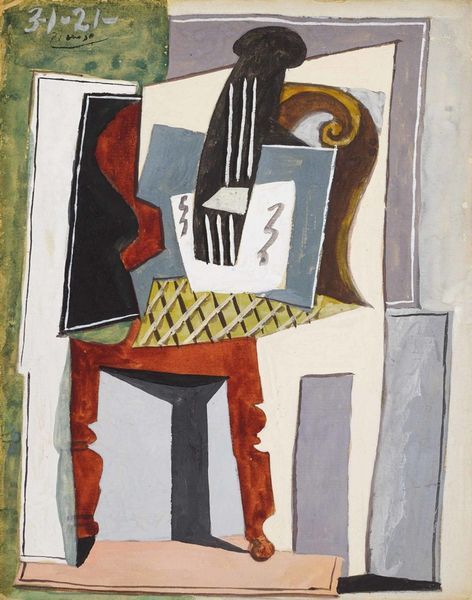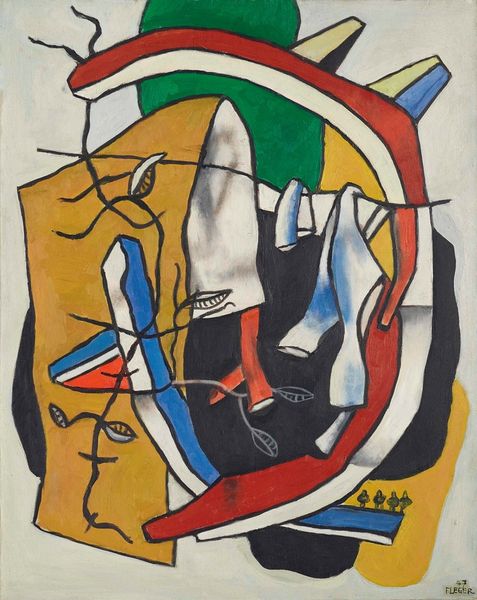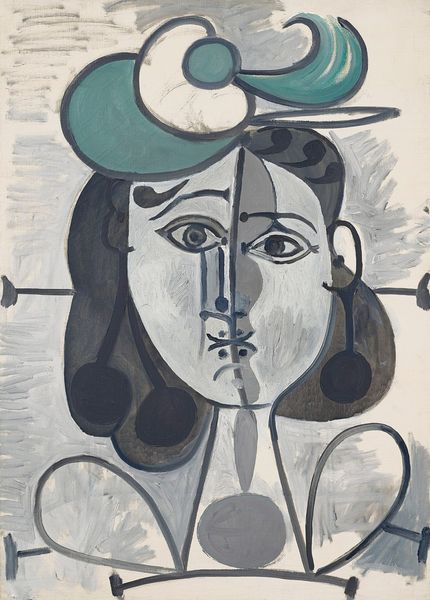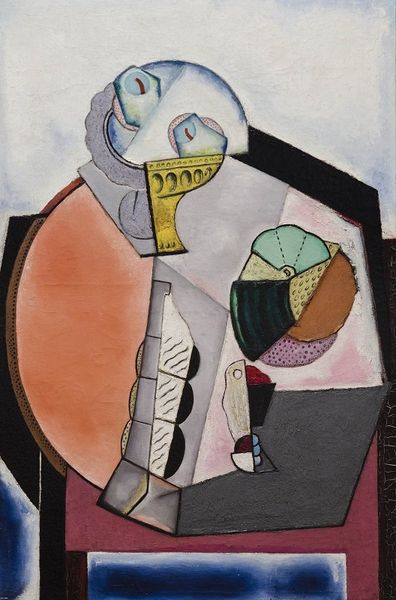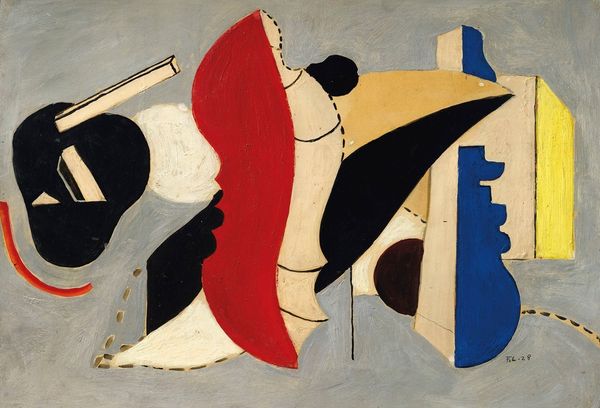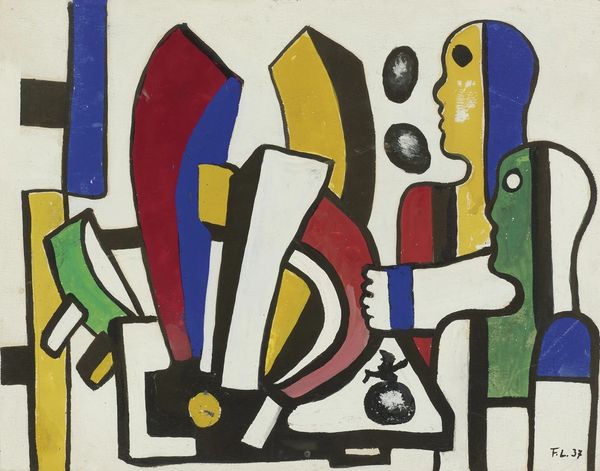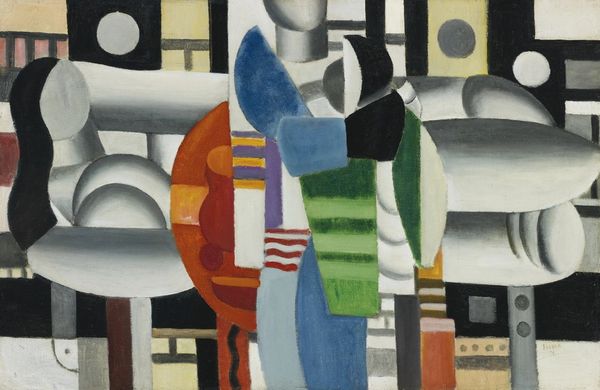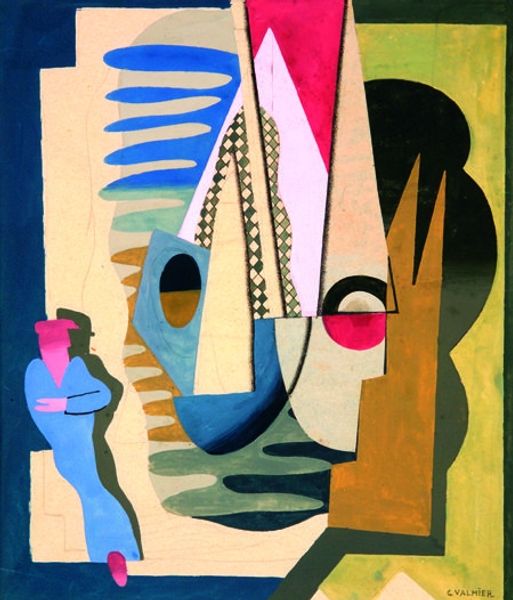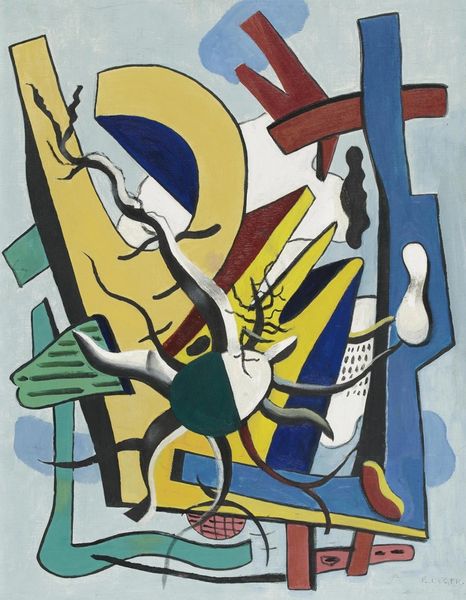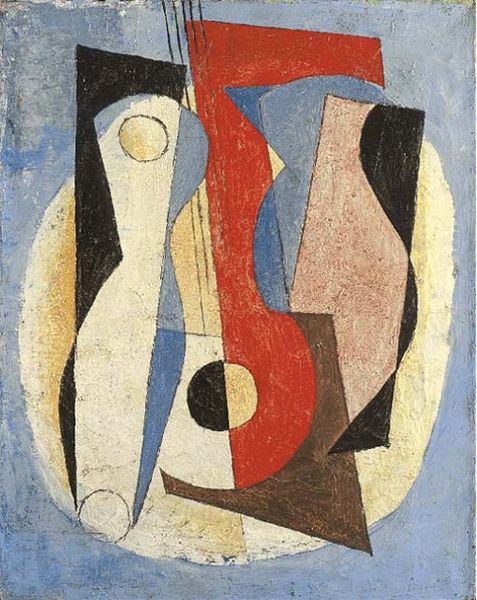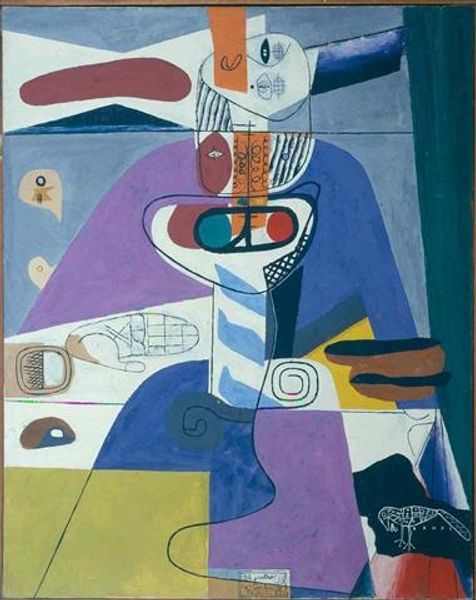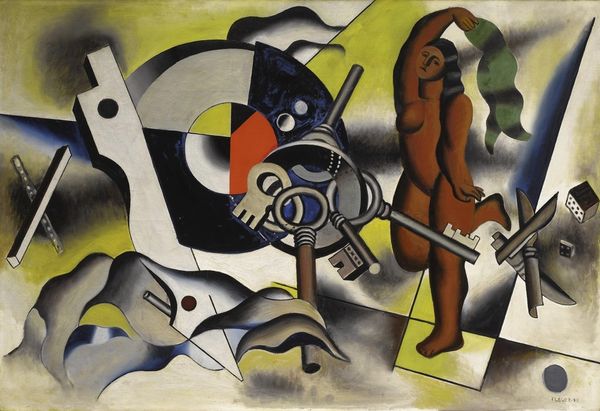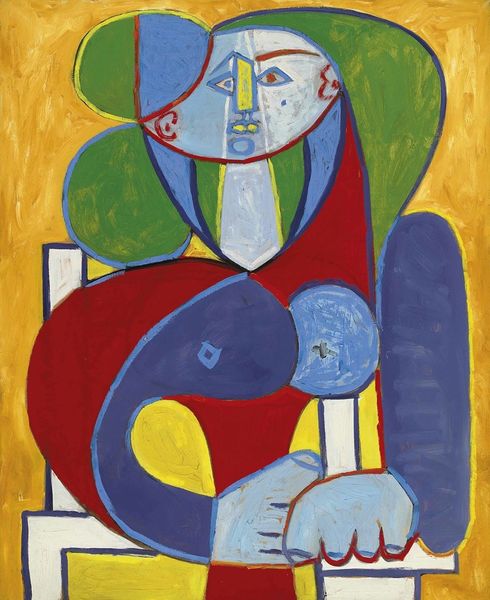
painting, oil-paint
#
portrait
#
art-deco
#
cubism
#
painting
#
oil-paint
#
pop art
#
geometric
#
abstraction
#
portrait art
#
modernism
Copyright: Modern Artists: Artvee
Curator: Welcome! We are standing before Fernand Léger's "Objets contrastés sur fond bleu," painted in 1932. It's an oil painting, showcasing his signature style of contrasting forms and colors. What are your initial thoughts? Editor: My first impression? Disorienting yet strangely harmonious. The geometric shapes and recognizable objects seem to jostle for space, but the blue background ties it all together. There is a palpable tension between the mechanical and the organic. Curator: Absolutely. Léger's focus here is less on representation and more on the inherent qualities of objects. How does the production itself influence the composition of geometric and organic components. It almost looks as if the labor invested in these raw shapes, through paint, somehow contributes to an odd sort of beauty? Editor: I find myself asking, how do we situate this “beauty”? Léger was deeply invested in the working class. Are we meant to find an elegance within the industrial process that mirrors class struggles? Perhaps the sharp contrasts challenge conventional ideals, pointing toward a society still dealing with the fallout from industrial revolution? Curator: Interesting, because consider the materials themselves. The canvas and the oil paint, these are standardized materials that many different individuals handle—how many points of human contact lie beneath the composition, and to what extent do the artist's individual ideas get shaped by their contact? This piece showcases a machine aesthetic, but is the "machine" really Léger? Or is it this anonymous laboring collective that pushes society forward? Editor: That interpretation adds a new dimension. Léger lived through tumultuous times. Seeing this, with our current social and political landscape in mind, can't help but make you question how artists process this change. What statements are these raw shapes are making to our sense of culture? Curator: Precisely! By foregrounding process, materiality, and, in some way, standardized labor, Léger disrupts those older narratives of artistic genius. It gives a kind of artistic voice to working conditions by using the language of the working class. Editor: So, as we wrap up, this piece leaves me pondering the complex intersection of form, social statement, and labor – a dialogue that still echoes in our contemporary moment. Curator: Yes, "Objets contrastés sur fond bleu" is a visual reminder of how our interpretations are shaped by our engagement with materials and our understanding of the labor behind the work.
Comments
No comments
Be the first to comment and join the conversation on the ultimate creative platform.
